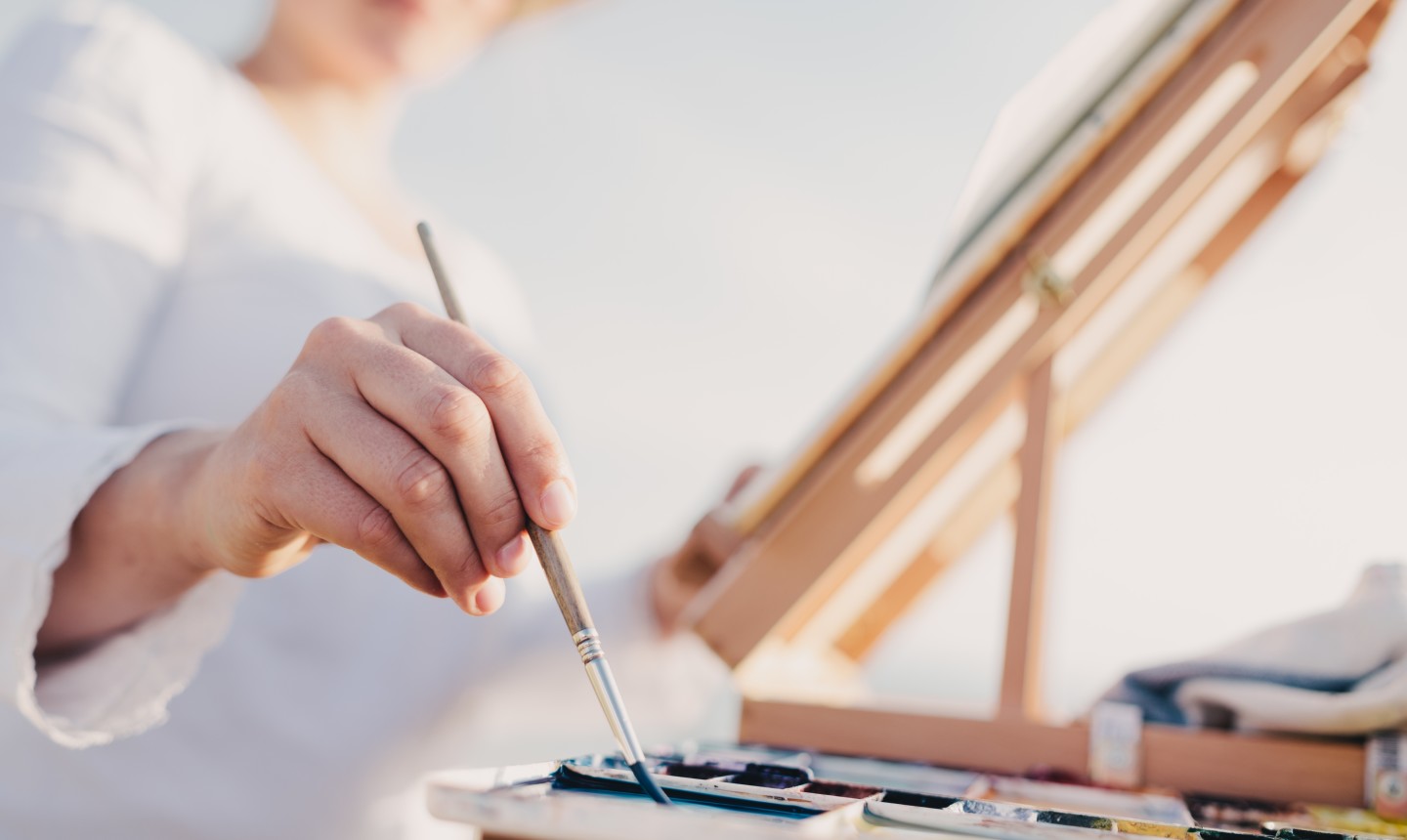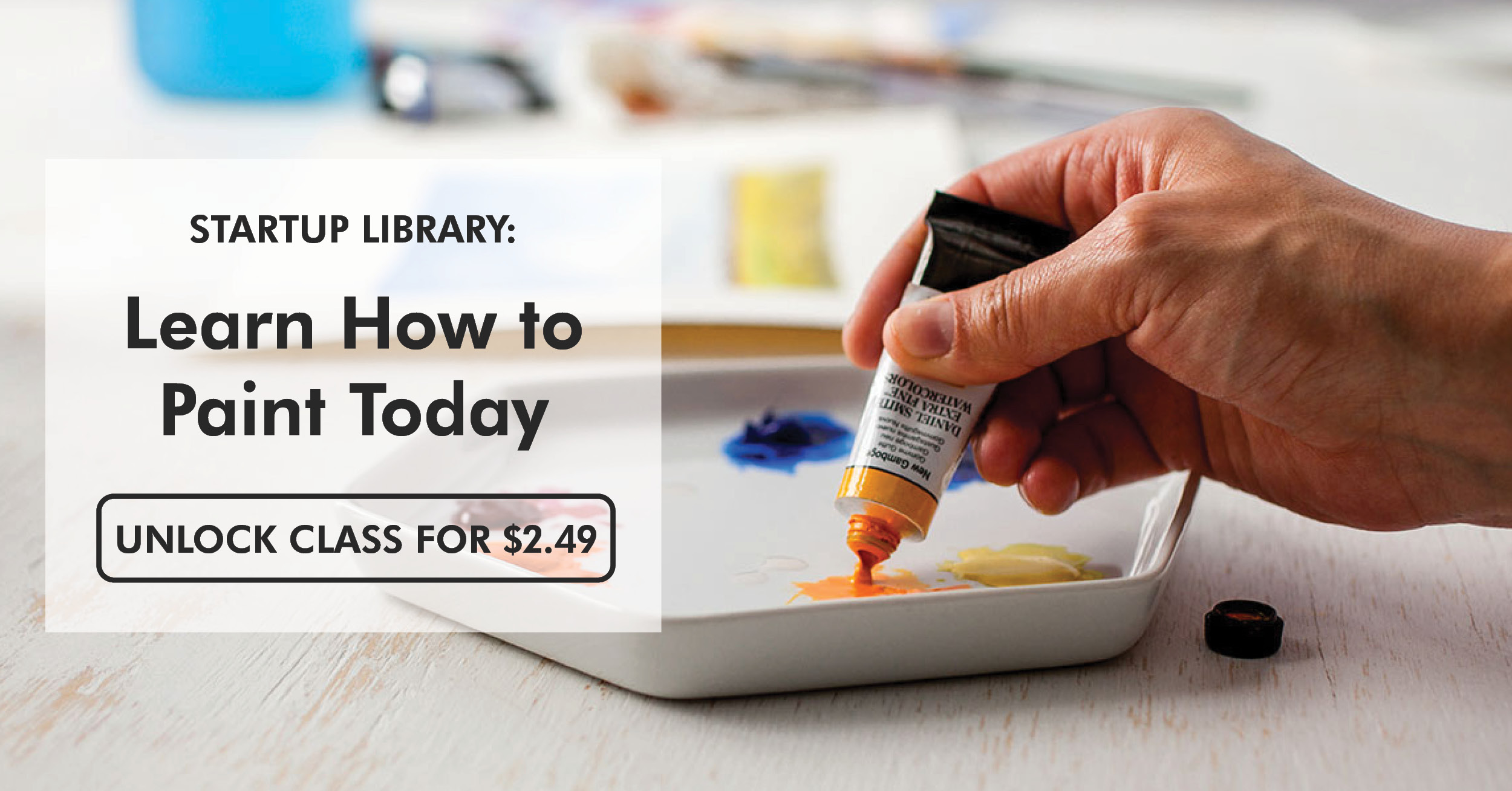
Outdoor watercolor painting is something I recommend to all of my students. When you're out in nature feeling the air and watching the light change right in front of your eyes, you can bring more than just an image of a landscape to your paintings; you can bring a sense of atmosphere and emotion.
But plein air watercolor painting can also be rife with pitfalls if you don’t plan ahead before filling your pack and heading out into the field. Luckly, the most common newbie errors are easy to avoid.
1. Forgetting to Check the Weather
Obviously you're not going to head out painting in a downpour. But interpreting the weather forecast is more complicated than just rain or shine. That's because the water in watercolor can be fussy: it will freeze in the winter, dry too quickly in the wind and sun, and it can take forever to dry in humidity.
Save yourself the frustration; if temps are below freezing, just stay in! In the warmer months, shade your work (and yourself!) under a tree or an umbrella. Windy days are best avoided altogether. However, if my hands are itching to create, I’ve been known to paint from the comfort of my car, rain or shine (or wind)!
2. Overpacking
While you don’t want to lug around your whole studio, you also don’t want to be caught without the tools you need. Luckily, there are some great ways to narrow down your plein air toolkit without sacrificing flexibility.
My mantra? Simplify, simplify, simplify! I actually learn a lot by limiting my color choices and brush selection. It forces me to find creative ways to do more with less! Plus, sticking with a lightweight, streamlined set of supplies makes your excursion way more enjoyable, which means you'll do it more often.
3. Working Too Large
For painting outdoors, I never work on paper larger than 9 x 12 inches. When you’re trying to capture morning sunlight over a misty lake, you don’t have much time before that mist vanishes and the light completely changes. Sticking to smaller paper helps you finish your work faster and get all the most important information down before a beautiful scene vanishes.
If your ultimate vision calls for a large-scale format, don't worry. Think of your plein air work as a sketch, then head back to the studio and have fun recreating the scene in a larger way.
4. Aiming for Perfection
Until you become experienced at outdoor painting, go easy on the expectations. Honestly, I hardly ever find my en plein air paintings frame-worthy.
The practice is more like an experiment in direct observation — a learning lab of how to translate color, atmosphere, shapes, wind and weather onto a 2D piece of paper. If I look at my outdoor painting efforts in this light, they are all successful.
By working to capture a scene as it changes before your eyes, you'll learn more in 30 minutes en plein air than you would in days spent isolated in the studio. So don’t worry about painting your masterpiece just yet. Focus on documenting the colors and shapes you see around you, and the rest will come in time.
Looking to get started with watercolors? Check out the class Startup Library: Watercolors below!


Share tips, start a discussion or ask other students a question. If you have a question for an expert, please click here.
Already a member?
No Responses to “Common Plein Air Watercolor Mistakes and How to Avoid 'Em”